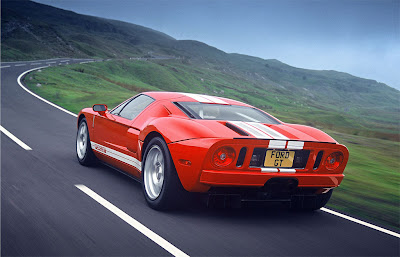
 The W16 alloy engine developed by Bugatti for the Veyron 16.4 will have a special and absolutely unique place in the history of sports car construction. Its design employs the space-saving VR principle with two particularly slender eight-cylinder blocks arranged at a 90° angle to each other.
The W16 alloy engine developed by Bugatti for the Veyron 16.4 will have a special and absolutely unique place in the history of sports car construction. Its design employs the space-saving VR principle with two particularly slender eight-cylinder blocks arranged at a 90° angle to each other.
 1001 horsepower equip the Bugatti Veyron 16.4 with a level of acceleration unheard of in the sports car segment, propelling it from 0 to 62 mph in just 2.5 seconds and past the 200 mph mark in a mere 24 seconds. Thanks to its 923 lb-ft, the Bugatti Veyron 16.4’s enormous propulsive power is not exhausted until it reaches 252.3 mph (407 km/h): the maximum speed for which chassis and drive train have been designed. Any further performance escalation is limited by current design and construction.
1001 horsepower equip the Bugatti Veyron 16.4 with a level of acceleration unheard of in the sports car segment, propelling it from 0 to 62 mph in just 2.5 seconds and past the 200 mph mark in a mere 24 seconds. Thanks to its 923 lb-ft, the Bugatti Veyron 16.4’s enormous propulsive power is not exhausted until it reaches 252.3 mph (407 km/h): the maximum speed for which chassis and drive train have been designed. Any further performance escalation is limited by current design and construction. Also unique is the power transmission via an innovative directshift gearbox. Without any interruption in the power flow, the sequential seven-speed gearbox transmits the engine’s power to the wheels via permanent four-wheel drive. Put simply, this means uninterrupted acceleration from a standing start to maximum speed: a feeling previously known only to jet pilots.
Also unique is the power transmission via an innovative directshift gearbox. Without any interruption in the power flow, the sequential seven-speed gearbox transmits the engine’s power to the wheels via permanent four-wheel drive. Put simply, this means uninterrupted acceleration from a standing start to maximum speed: a feeling previously known only to jet pilots.The interior is exquisite; details like vents and door pulls are made of machined and polished aluminum.
 Some of the facts and figures.
Some of the facts and figures.253 mph - The electronically limited top speed.
257 mph - The theoretical top speed, on a perfect run.
2.3 mpg - Fuel economy when running at full speed
12 minutes - The time it takes to empty the fuel tank at top speed
51 miles - The distance covered while emptying the tank
0 - 125 mph - 7.3 seconds
0 - 187 mph - 16.7 seconds
0 - 250 mph - 55 seconds
250 - 0 mph - 9.8 seconds
The seven speed DSG transmission can handle up to 1106 lb ft of torque, 185 lb ft more than the Veyron develops.
Video Bugatti Veyron






















